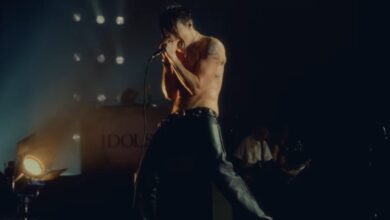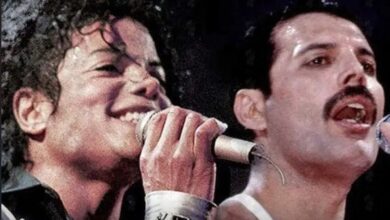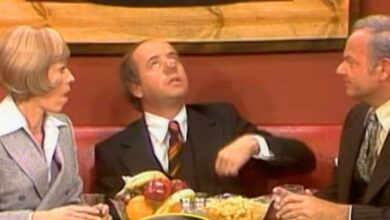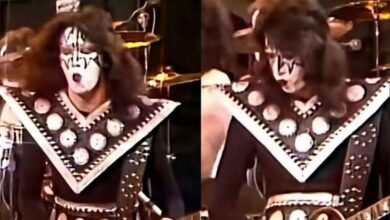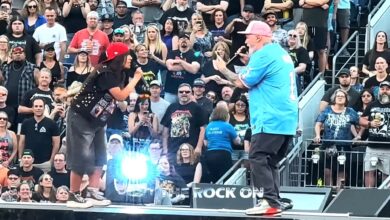Ozzy Osbourne’s “Iron Man” at US Festival Sparks Heavy Metal History in 1983
When Ozzy Osbourne tore into “Iron Man” at the US Festival in May 1983, the moment became legendary—one of the finest live renditions aside from Black Sabbath itself. As the opening chords rang out across Glen Helen Park, he turned Sabbath’s classic into a solo thunderstorm, backing a powerful voice with a crushing guitar-driven storm. It was a defining moment for his nascent solo career post–Black Sabbath, and a reminder that Ozzy still wielded raw, magnetic power.
Ozzy Osbourne, riding high off the split from Black Sabbath in 1979, was in the midst of staking his solo claim. Having launched Blizzard of Ozz in 1980 and weathered line-up shifts, he arrived at the US Festival with rugged determination. Gone was the shadow of Sabbath’s doom-laden mystique; he was now forging his own path in open air—on stage, in sweatpants rather than cape, Ozzy looked ready to prove he could stand alone.
The US Festival itself was a marvel of ambition. Organized by Steve Wozniak, it was meant to blend music and technology in a communal celebration. Heavy Metal Day—May 29—brought together Ozzy, Judas Priest, Scorpions, and Van Halen. Ozzy’s timing was perfect: still in the early wave of his solo career, this festival placed him among genre giants and reunited him with the legacy he’d helped build.
On stage for “Iron Man,” Ozzy prowled with charisma, leading the crowd in every chorus. Behind him, guitars snarled and drums thundered. The arrangement pared down production flourish in favor of pure performance. He didn’t need theatrics—just his voice and the riff—and the result was a visceral channeling of Sabbath’s original energy, without diminishing its iconic danger.
The reaction was immediate. The crowd roared back every lyric. Live footage shows 1980s festival fashion—bands of fans with arms raised, jackets flapping, every body moving in time. You could feel the collective pulse of a scene coalescing. Many fans later recalled that night as proof that the “Prince of Darkness” was alive and well, even without Sabbath.
This rendition of “Iron Man” carried deeper resonance. Ozzy defied expectations: many assumed he’d fade after leaving Sabbath—but here he was, owning Sabbath’s anthem on his own terms. It anchored his solo identity while reconnecting with the heavy metal ethos. Fans saw that he could carry the weight of his past without being imprisoned by it.
Ozzy’s performance also influenced other solo artists from major bands. It became a model: take a beloved song, reclaim it confidently, and reinvent it with authenticity. In the years that followed, countless frontmen stepped into their former band’s songs with similar swagger, echoing Ozzy’s example at US Festival.
Many other artists covered “Iron Man,” but few were given such an iconic stage. Judas Priest followed later that day, but the shockwaves from Ozzy’s set lingered. His stripped-down, sweat-soaked rendition offered a lesson in how to transform nostalgia into present-day power on a massive festival stage.
Behind the scenes, the performance was captured on mobile recording for Speak of the Devil. Though that album later used tracks from New York’s Ritz, it showed Ozzy’s commitment to capturing his revival live. The American festival circuit was becoming his proving ground.
Ozzy’s personal life was turbulent at the time—bold moves, battles with addiction, and public scrutiny—but on stage, he channeled turmoil into energy. The raw authenticity of that moment reflected his messy real life, and fans connected with a performer who bared his bruises in every note.
Decades later, that US Festival performance endures. It’s often cited as one of the decade’s most electric live clips, spotlighting rock’s ability to unite under open sky. Fans share grainy videos still—collective memory immortalized in cheering crowds and blazing riffs.
That night shaped live festival expectations. Organizers learned that arenas weren’t needed for impact—sometimes a raw, outdoor stage and a fierce lead singer were enough to electrify hundreds of thousands. Festivals worldwide shifted their booking to prioritize live energy over production spectacle.
Ozzy’s ability to harness his Sabbath roots while forging a solo identity gave him legitimacy. The performance built momentum for Speak of the Devil, Ozzfest, and his long solo career. It let audiences witness both familiarity and renewal—and made them believe his next move would always surprise.
After festival twenty-somethings bonded in the heat of performance, Ozzy found himself relevant again. His solo work was no longer dismissed as derivative—he owned the legacy and extended its reach. 1983’s festival cover was a signature statement that would echo into the future.
Ultimately, Ozzy Osbourne’s 1983 “Iron Man” at the US Festival stands as a masterclass in live reclamation. It wasn’t just nostalgia—it was rebirth. In sweat and feedback-laced power, he showed that legends aren’t trapped—they transform. And that night, dozens of guitars, thousands of hearts, and one unstoppable voice proved that heavy metal wasn’t disappearing—it was propelling forward.
